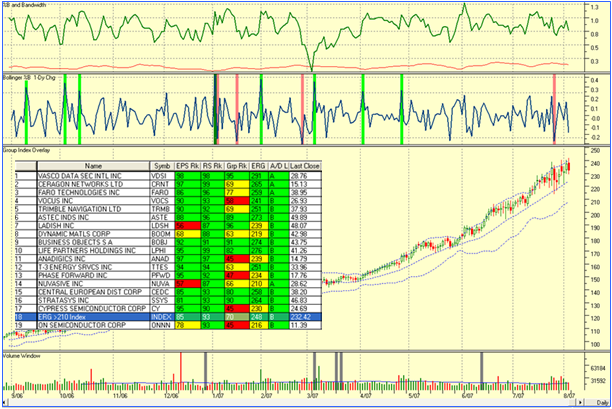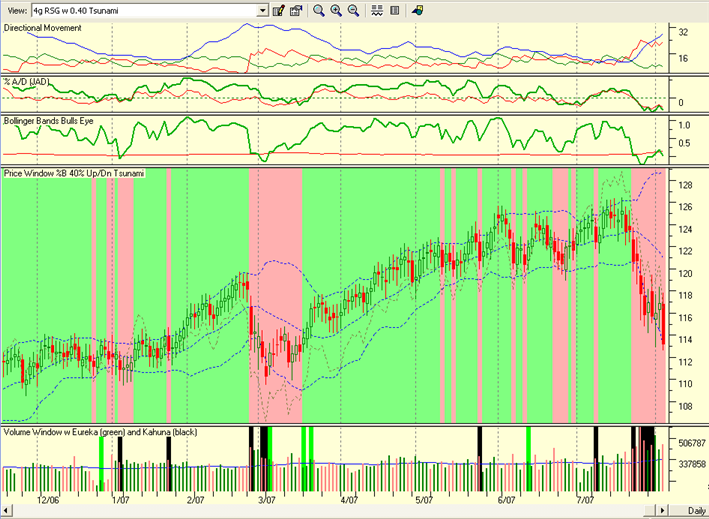The Early Bird Catches the Worm but Watch Out for the Hawk Above!
Tuesday, August 7th, 2007However (when one starts with a However you know the other side of the coin is coming), you may want to give some thought to a few other points:
-
Think about the potential IMPORTANT News that may be forthcoming on the very day you go for it. Today is such a day, with the FOMC doing its song and dance. The Nasdaq dropped over 30 points on the news, the DOW dropped over 120 points and sell programs came barreling in. Then, just as quickly, they reversed themselves and were up as many points…a crazy volatile market, which we must get accustomed to. We have had that for over 15 months now.
-
V bottoms are very rare patterns and one is far more likely to get caught in a retest of the lows.
-
Watch the internals of the New Highs and New Lows on strong up days. Yesterday was putrid, and most would call it a Dead Cat Bounce. It also happened to come off support at the 200-dma on the Nasdaq, which was a most likely call for most technicians.
-
However, to counter balance that, there is no question we are in a deeply oversold situation and there may be some low hanging fruit you can enjoy in the meantime. We have not seen such a large number of “E – A” distribution for stocks since May of 2004, after the long run up in 2003. Said another way, the A accumulation is at lows while the E’s are at highs, comparable to May of 2006 and other lows back in 2005, etc.
-
The correction so far has met the odds of a bounce back, i.e., you recall I taught you that 77% of the time the S&P 500 and for that matter the NASDAQ has held at an 8% minor correction. That’s the good news and that is where we are at right now. The bad news is if it breaks that level there is a further 11% chance it can hit 12% down on the S&P 500.
-
There is no question that good timing is everything, and the early bird who seizes the opportunity catches the fattest worm(s). But watch out for the Hawk above, especially in such a Volatile Market. As long as you trade with tight stops and raise your stops to preserve small profits and avoid automatic 8% losses, you will do fine.
-
Remember that “W” bottoms are more likely, so more cautious investors should wait a while to make sure a Double Bottom is behind us.
-
For those who want the market to prove it has bottomed and enter at a safer point, here are things to remember:
a. Watch for a retest of the lows, i.e., a Double Bottom. Then by all means look for the strong up day followed by the so-called Follow-Through-Day 4 to 10 days later. However, one must temper that with the tremendous Volatility we are now experiencing. Down and up over 200 points within a day from day to day is becoming commonplace nowadays, so be careful, as we have now essentially experienced that three days in a row…between friends. Don’t be too quick to jump in.
b. Pounce quickly when the Market Index (NASDAQ) breaks through the short term declining tops line from its recent highs.
c. Wait at least until the 4-dma goes upwards through the 9-dma and preferably both go through the 17-dma, for confirmation that the ship has righted itself. Use the 4a key on the Charting Module which is available with the HGSI Software.
d. For those who are even more cautious, we want the 17-dma up through the 50-dma, but you will be giving up a good deal of cloth on the upward rally. That’s fine if it continues, but again you can get caught from being too slow on any retrace.
That’s it for now. Good luck and Best Regards, Ian.
 Ian Woodward's Investing Blog
Ian Woodward's Investing Blog


